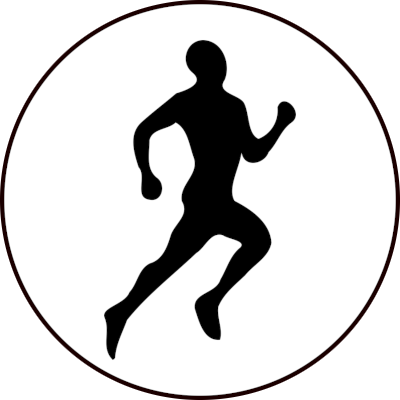I’ve been running for 1.5 years 20 miles a week on average.
I don’t have sprained ankles but I do find the outsides of my ankles are sore and tender, like when I’m putting on socks, walking up stairs, or squatting down.
How do you strengthen your ankles? Or, if my ankles aren’t the problem, what are the common weak muscles that might cause sore ankles when running?
To combat my soreness and general muscle imbalance, I recently started picking up strength training again with a simple routine that uses compound movements like squats and deadlifts. So I’m also open to weight training that could help with sore ankles.
Thanks for your suggestions.
If you haven’t sprained/hurt them and they’re sore, that sounds like they’re not happy about something. Overuse, or some gear issue (shoe), but generally inflamed.
But, to just answer your question, run on trails not the road and you’ll strengthen all the lower leg muscles connected to your foot/ankle. Just remember to pick up your feet more than street running, or your gonna fall!
P.S. you’re still probably going to fall :)
Put your sole vertical and push down stretching is a regular option.
The other thing is to practice the ankle with a muscle memory of avoiding sprains when you’re on uneven ground. Just train it to see the danger of continuing, and do something about releasing the weight of that foot immediately.
Good training can come from ice skating or roller blading. Both require the muscle memory of avoiding sprain type caving of the ankle. Do it so you release sooner.
After an ankle injury, my physical therapist recommended to purchase Resistance bands of different strengths and BOSU Ball from Amazon. Resistance training, balancing exercises, and Stretching.
That being said, I would try finding a sports medicine specialist or PT to guide you through these exercises to address the pain you’re experiencing. https://www.verywellhealth.com/ankle-exercises-a-complete-guide-2696480
https://www.menshealth.com/fitness/a26412541/ankle-strengthening-exercises/
Calf raises and tibialis raises (search youtube) are what I’ve been doing, they seem to be helping.
Since most comments are focusing on exercises you can do: Diet is a large part of it too.
Things like leafy greens and berries contain a lot of antioxidants and phytochemicals which help combat inflammation.
Nuts and Seeds contain Omega-3 fatty acids which are important for joint health.
Make sure you get enough calcium for general bone health too, and you have all the vitamins and minerals in your diet.It’s very anecdotal, but I used to have ankle problems while running, and minding my diet more has helped a lot. I don’t have joint pains after long runs anymore.
A very easy one is to stand on one leg every day while you clean your teeth
Calf raises, single leg hopping and landing, static single leg balance exercises, etc. Weak calves contribute to a lot of problems, including ankle pain.
I would add a simple exercise of static single leg balancing with closed eyes. Great for ankle and calf strength, as well as overall balance.
It’s amazing how much we rely on eyesight for our balance.
Yep, that’s a great one to start off with if you aren’t recovering from an injury or have pre-existing balance issues (safer to start with eyes open for these). From there you can progress to a balance board when you’re ready.
EDIT: Another one I like doing is holding a heavy object (a weight or just a can of soup or something) in one hand, then reaching forwards slowly on one leg towards your toes, before coming back up. I’m not sure if I’ve described that well but hopefully it helps people find an example online.
I’m fighting with some Tibialis Anterior lock-up. Like, the shin muscle won’t let go.
Apparently, though, through my physio ‘journey’, I’ve learned that a strong tibialis prevents shin-splints and strengthens the knee’s resilience.
Go look up how to work it and stretch it, while we’re talking calves, and it could save your knee parts one day.
It’s too late for me, unfortunately, I already learned this the hard way. During the 2022 football (soccer) pre-season I pushed myself too hard and overloaded my legs, particularly the calves, resulting in recurring ligament and tendon injuries in both ankles that prevented me from playing or training. When I finally returned to full training, I sprained my MCL and tore my meniscus after landing awkwardly on one leg. I guess the one upside of spending almost an entire year doing physio rehab is that I’ve learned a lot about my body and how to take care of it.
deleted by creator





